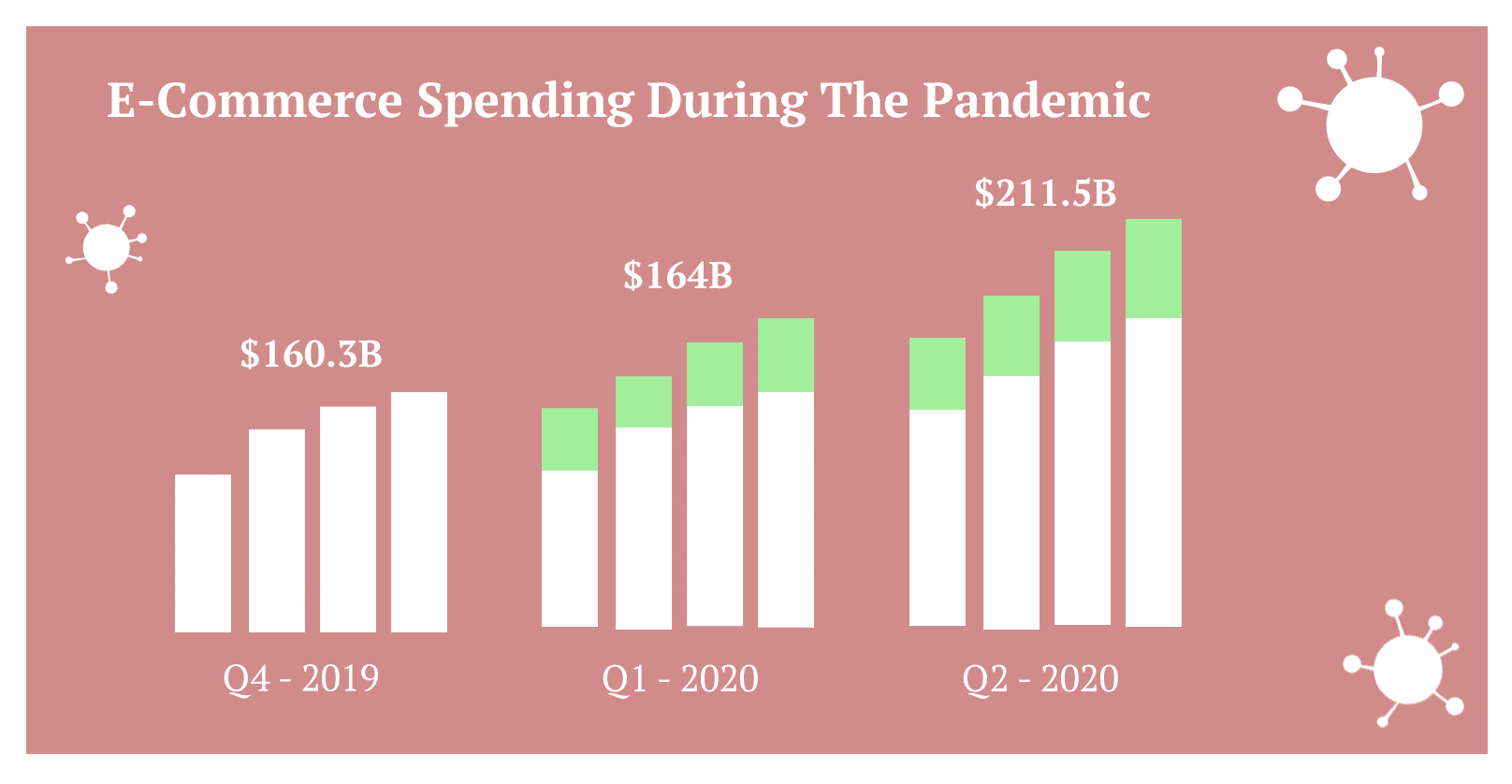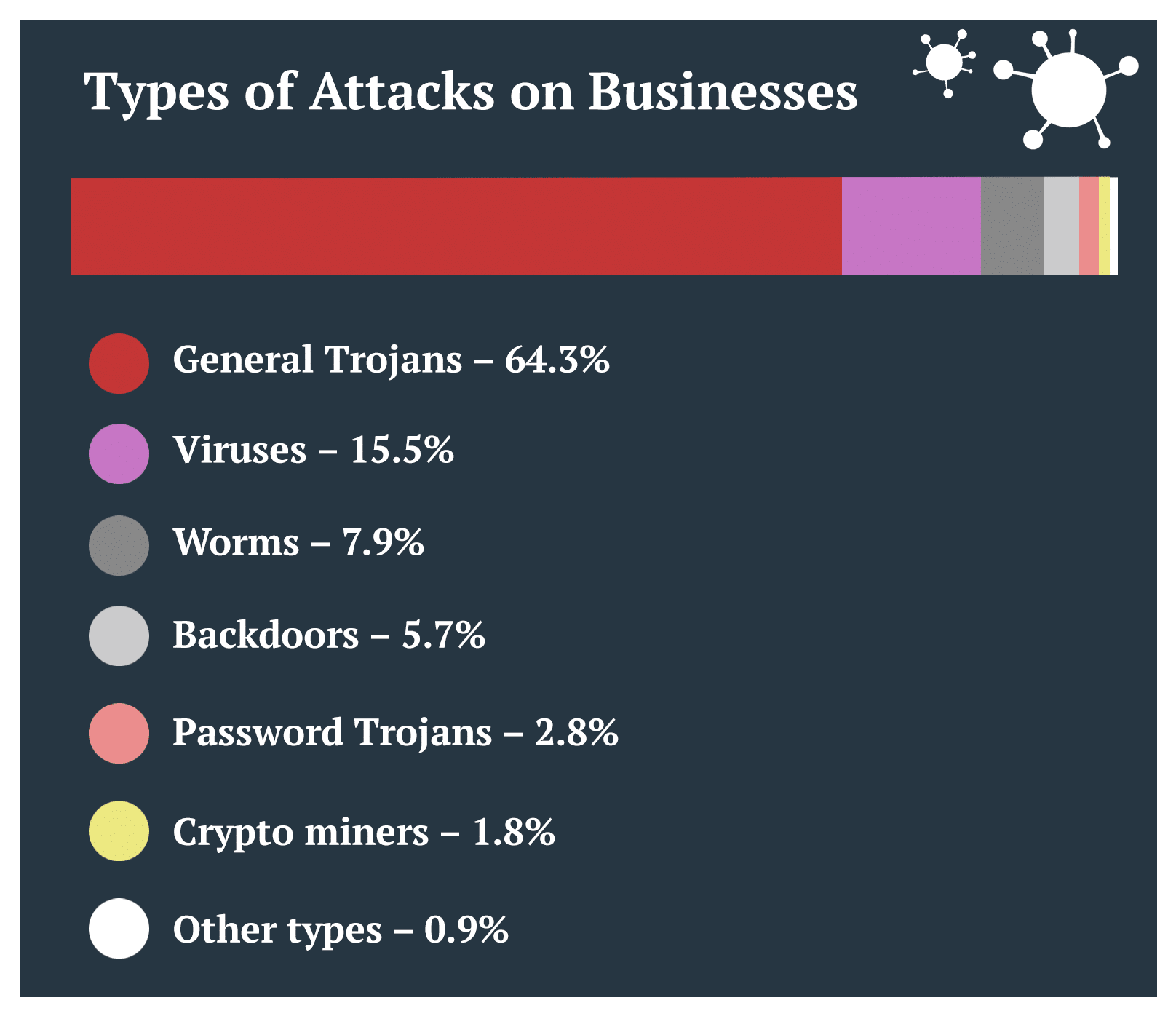By late March of 2020, the global COVID-19 pandemic had swept through most of the world. It shut down businesses, stopped production, and forced people out of their offices and into working from home.
In a triumph of technology and the human spirit though, life went on. People accessed their company servers from their laptops, took meetings on Zoom, and shopped online for all the things they would usually have to make a trip to the store.
The technology we now have in the palm of our hands and the connectivity offered by the internet allowed society to continue to function during these incredibly devastating and challenging times. Unfortunately, this move to living and working online would become an opportunity for some people to exploit.
Cybercriminals took one look at the increased business being done and information being exchanged online and saw the possibility of what increased cyberattacks could offer. They attacked businesses around the globe at a rate we have not seen before, commandeering networks, stealing sensitive information, and shutting down systems.
MonsterCloud, a leading expert in cyberterrorism and ransomware recovery, has analyzed the stats, surveys, and studies to see just how vulnerable businesses are to cyberattacks during the pandemic. Here, MonsterCloud reviews the threats and vulnerabilities businesses face during these unprecedented times.
Working from Home Stats
The pandemic shut down businesses and offices around the U.S. starting in mid-March of 2020 and by April 1, 31% of Americans were working from home. The pandemic continued and the related shutdowns forced Americans into one of three general categories – working full time from home, unemployed, or an essential worker who still had to go into their place of business.
According to a Stanford University study from its Institute for Economic Policy Research, three months into the shutdown, 46% of workers were working full-time from home, around 33% were unemployed, and the remaining 26% were still going in and working on-premise.
Even as the country began opening up in the summer and into the fall, work from home numbers continued to be on the rise. As of August, 51% of workers were no longer working remote at all while 26 % were still full time at home. The remaining 23% or so of employed Americans were doing a mix of remote and on-site work.

Ecommerce During the Pandemic
In addition to more people working from home, more people were shopping and buying things online during the pandemics well. Many brick and mortar stores were closed or had limited hours or capacity. Even when stores were open, many people felt more comfortable staying away in order to decrease their chances of contracting the virus.
According to the U.S. Department of Commerce, Americans spent a total of $160.3 billion online during the first quarter of 2020. This represented a modest 2.4% increase from Q4 of 2019. Once the pandemic shutdown hit at the beginning of Q2 in 2020, the total dollars spent inline rocketed to $211.5 billion. This is a 31.8% increase from the pre-pandemic high.
This shift of consumers engaging more with Ecommerce has been going on for a while now but the pandemic has caused a major and most likely irreversible jump. A recent survey found that 40% of Americans “increased or significantly increased” their online shopping during the pandemic.

Attacks on Business Growing
One thing that the pandemic did not cause was cyberattacks. Before the global pandemic started, businesses have long been the prime targets of cybercriminals. In 2018, cyberattacks cost businesses around the world more than $45 billion and in 2019, that number increased by 11% to reach almost $50 billion.
Businesses cost per incident has been rising in recent years as well, going from $3 million per incident in 2018 to $4.6 million in 2019. Large-scale attacks that cost businesses more than $10 million also jumped from 7% to 13% in that same time. These costs come from the fact that around 45% of all attacks lead to customer loss or brand reputation loss and around 32% include direct revenue loss or have operational effects.
Types of Attacks on Businesses
Businesses are attacked in all different ways these days as well. Malware is the most common attack followed by web-based attacks and denial of service. There are multiple types of malware that make up the broader category. In 2019, the category was comprised of the following types of malware.

Many of these malware attacks are used to set up ransomware attacks which is the fastest-growing attack on businesses, growing by over 21%. This is followed by malicious insider attacks growing at 15% year over year, web-based attacks at 13% growth, and physically stolen devices and botnets coming in at 12% each.
Pandemic-related Increase in Cyberattacks
If the general statistics on cyberattacks and their cost aren’t scary enough, the 2020 pandemic increased these numbers by an incredible amount. During the height of the pandemic, the FBI’s Cyber Division announced that reports of cyberattacks on businesses increased by up to 400% a day. Pre-pandemic, this cybersecurity-focused law enforcement department received around 1,00 complaints a day. COVID-19 increased these numbers to 3,000 to 4,000 a day.
This is not just a U.S. problem either. The International Criminal Police Organization, better known as INTERPOL, also reported a major increase in cybercrime, specifically, cybercriminals using disinformation directly related to the pandemic to get people to click on malicious links. Worldwide malicious domain registrations increased 569% from February to March 2020, and there was also a 788% increase during that period in high-risk registrations.
An August 2020 report from Interpol about pandemic-related cyberattacks notes, “In one four-month period (January to April) some 907,000 spam messages, 737 incidents related to the malware and 48,000 malicious URLs – all related to COVID-19 – were detected by one of INTERPOL’s private sector partners.”
INTERPOL’s survey showed that the COVID-19-related attacks came in the following forms:
- Phishing/ Scam/ Fraud – 59%
- Ransomware/ Malware – 36%
- Malicious Domains – 22%
- Fake News – 14%
As the pandemic continues, so do these cyberattacks. While the total costs of pandemic-related cyberattacks in 2020 won’t be known until some point in 2021, experts estimate that it may reach into the hundreds of millions around the world. When you add in the cost of increased cybersecurity measures that companies are having to implement to protect their businesses, that number could reach into the trillions.
Conclusion
The global COVID-19 pandemic of 2020 has been incredibly difficult for everyone, no matter who you are or where you are from. It has also been very challenging for businesses, big and small, around the world. In addition to facing shutdowns, slowdowns, and lockdowns, businesses are also under siege by cybercriminals who see this as an opportunity to attack.
As we move forward from this pandemic though, the high rate of cyberattacks is unlikely to change. Statistics are already showing that remote work is here to stay and will continue to grow even after it is safe to go back to an office setting. A recent University of Chicago survey showed that the average amount of work from home days are expected to jump from 5% on average pre-COVID to 20% on average after COVID. That survey also showed that there is already a 25% decrease in demand to work in high-rise offices for 2021.
If you believe that your business is vulnerable in 2020 and beyond or you are nervous about your readiness to deal with a cyberattack, pandemic-related or otherwise, the cybersecurity and ransomware experts at MonsterCloud can help. In addition to being a leader in ransomware removal, they can also help you protect your business before an attack happens, put plans in place to mitigate the damage if an attack comes, and recover fast after an attack.
MonsterCloud reviews your cybersecurity to make sure you are protected from an attack happening, or happening again. They have successfully worked with over 1,000 victims of ransomware attacks. They have also successfully removed and recovered the affected data within 24 to 48 hours in 97.4% of cases.
About MonsterCloud
MonsterCloud is a leading authority on cyberterrorism and ransomware and is home to some of the world’s most renowned ransomware removal experts. Founder and CEO Zohar Pinhasi is a Counter Cyberterrorism Expert, Cyber intelligence threat specialist, and a Ransomware Recovery Expert with nearly 25 years of experience in cybersecurity.
The company is a leader in ransomware removal and managed cybersecurity services and is backed by former FBI Deputy Director John Pistole. MonsterCloud has provided cyber threat intelligence to some of the world’s top authorities, including The Federal Bureau of Investigation (FBI) and dozens of police departments and municipalities across the United States and is a member of “No More Ransom” organization, an initiative by the Europol’s European Cybercrime Centre, among others, whose goal is to thwart ransomware.
Sources
https://news.stanford.edu/2020/06/29/snapshot-new-working-home-economy/
https://www.bls.gov/opub/mlr/2020/article/ability-to-work-from-home.htm
https://news.gallup.com/poll/318173/remote-workdays-doubled-during-pandemic.aspx
https://www.cnbc.com/2020/08/18/e-commerce-sales-grew-more-than-30percent-between-q1-and-q2.html
https://www.accenture.com/us-en/insights/security/cost-cybercrime-study
https://www.securitymagazine.com/articles/90493-cyber-attacks-cost-45-billion-in-2018
Fair Use Statement
You may share this content (for noncommercial purposes) to the clouds and back – just link the materials to this page. And while you’re at it, please credit us too!

